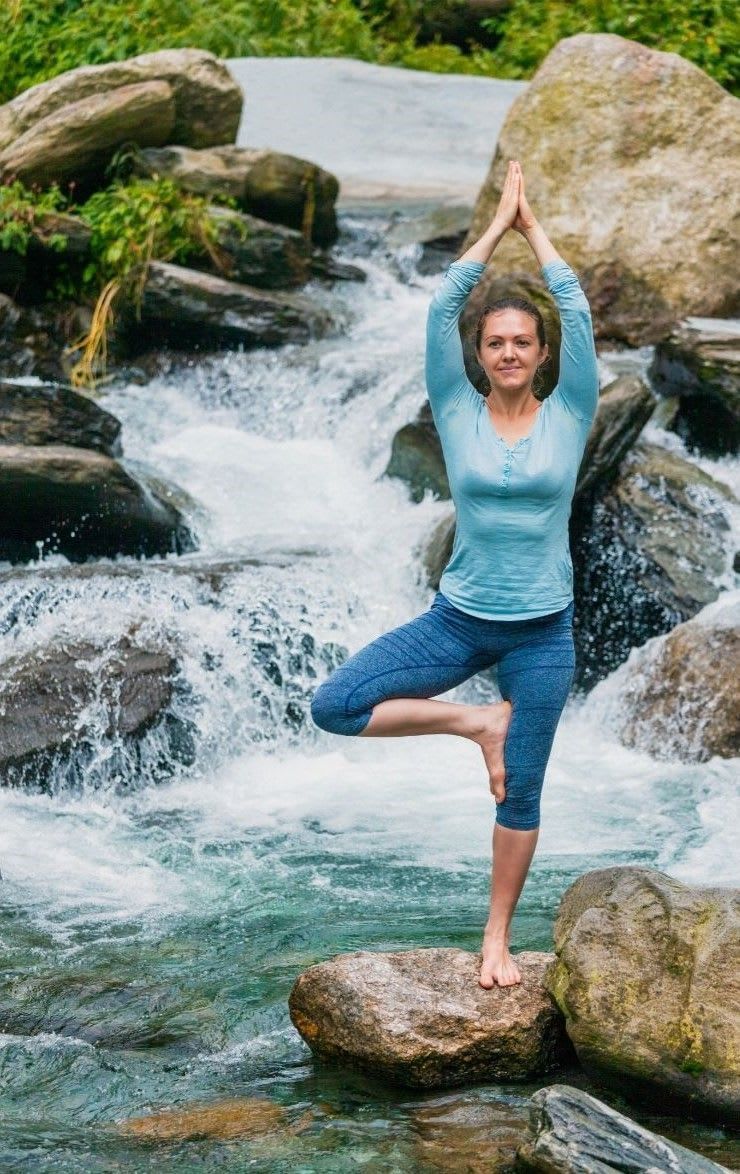All About Vrikshasana Benefits, Precautions & Steps

What is Vrikshasana?
Vrksasana is a Sanskrit term that combines the words Vriksha and Asana. Vriksha is the Sanskrit word for tree, while Asana is the Sanskrit word for posture. As a result, this is known as Tree Pose in English.
Vrikshasana is one of the standing basic yoga postures. Furthermore, in Hinduism, this pose was used as a method of austerity, or Tapasya, by Sages. A man executing a stance similar to Vrikshasana is seen in an old rock temple at Mamallapuram dating from the seventh century CE. As a result, it is clear that this is an old yoga posture.
Vrikshasana Benefits
1) Maintains the Overall Balance
Because vrikshasana is primarily a balancing posture, it aids in bodily and mental balance. The stance seeks to keep your body and mind from wandering and maintain balance while being in the moment, similar to how a tree can balance while remaining securely anchored. Your body will become more centred from the inside, resulting in a sense of serenity and stability.
2) Tones the Leg Muscles
Vrikshasana helps build muscle throughout the leg, from the feet and ankles to the shins, calves, knees, and thighs, because you are only working one leg at a time. It strengthens and acclimates the legs to a higher level of endurance. It also aids in the improvement of leg flexibility.
3) Results in a Better Posture
Vrikshasana helps strengthen posture in one of the most natural and organic methods conceivable, as it entails standing correctly for longish amounts of time, with your spine straight, your feet powerful, and your upper body relaxed yet erect. It prevents you from slouching over or putting too much weight on one leg, for example, because it strengthens both legs equally.
4) Strengthens Hips and Pelvic Region
The hips are opened out in vrikshasana, which promotes flexibility and strength in that area. Because of the weight-bearing nature of the posture, the bones of the hips and pelvic region, as well as the muscles, are strengthened, preventing hip osteoporosis.
5) Reduces the Risk of Sciatica
Sciatica is characterised as pain that radiates down the length of the body from the sciatic nerve. Lack of exercise and a sedentary lifestyle are among the causes, as are spinal disc degeneration and sleeping on a lumpy mattress. Burning or tingling sensations, weakness, and persistent discomfort are some of the symptoms. The discomfort can be crippling, but frequent vrikshasana practice can help ease the symptoms and heal the pain to a large extent.
6) Helps with Concentration
Because vrikshasana promotes a sense of balance in the body, it also has a positive impact on mental health, as it improves focus and concentration, making your mind sharper and less prone to wandering. It aids in the stabilisation of the neurological system, allowing it to perform at its best. Apart from enhancing mental performance, vrikshasana is also beneficial for self-esteem and preventing melancholy and mood swings. It may also aid in the prevention of diseases such as Parkinson's and Alzheimer's.
Also Read: 10 Amazing Padmasana (Lotus Position) Benefits That You Should Know!
Vrikshasana Steps - How to Do Vrikshasana
- Keep your back straight and stand straight.
- Lift your right leg and balance solidly on your left leg. Your right leg should be bent at the knee.
- Place the inner of your left thigh with your right foot. Make sure your right foot's toes are facing down.
- At chest level, join your palms in prayer position. Raise your arms above your head, stretching your hands upward.
- Hold the pose while taking a deep breath periodically.
- Separate your palms after lowering your arms to chest level.
- Return to a standing position by straightening your right leg.
- With your right leg, repeat the stance.
Also Read: 11 Amazing Chakrasana (Wheel Pose) Benefits That You Should Know!
Vrikshasana Precautions
- If you have a recent leg, knees, or back injury, avoid performing this asana.
- It may be hard in the initial stage to place your leg above the knee, so one can place it below the knee. But never put it on the knee since all the pressure will be centred towards the knee then.
- If you suffer from migraine, insomnia, high or low blood pressure, do not perform this asana unless recommended by the doctor.
